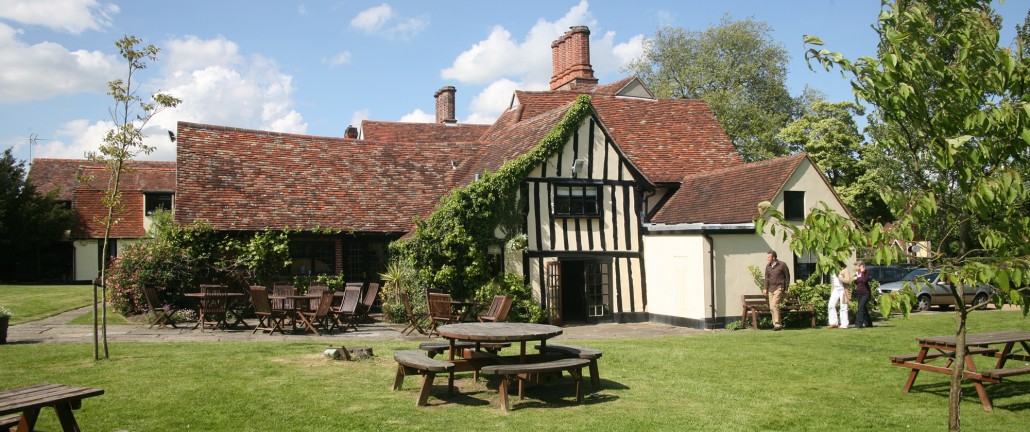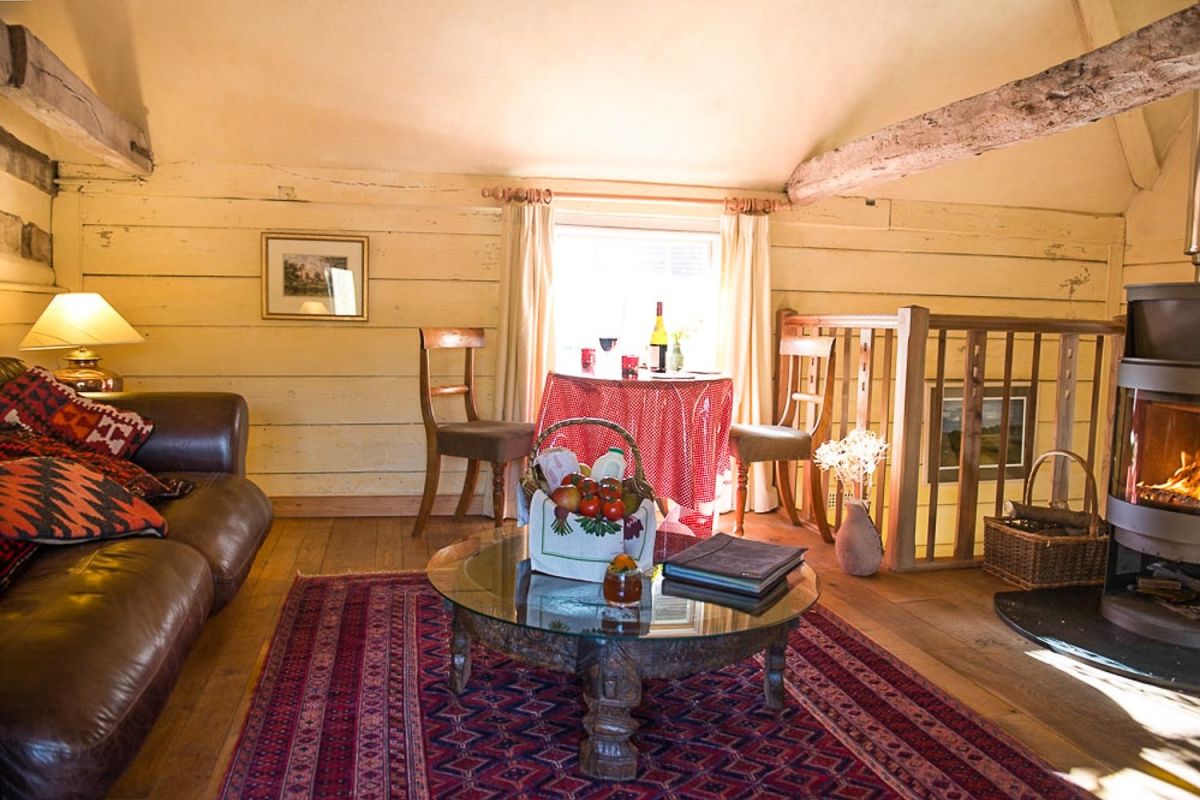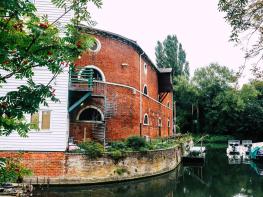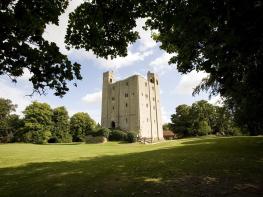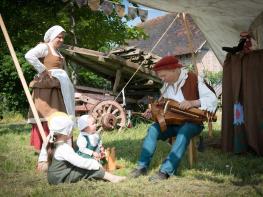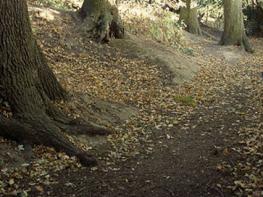The Retreat is a superbly appointed self catering facility comprising of The Barn and The Lodge…
Alphamstone to Bures

A walk along an attractive stretch of the River Stour
5.25 miles (8.4kms)
About the walk
Lying just over a mile from the Suffolk border, the village of Alphamstone is set in rolling countryside which is predominately arable with some pasture for sheep. There is ancient woodland in the valley behind the church which is rich in native tree species and wild flowers in the spring. Less than two miles away is the village of Bures which has a railway station and a single track linking Marks Tey in Essex to the Suffolk market town of Sudbury. The River Stour dissects the village and once across the road bridge you enter Bures St Mary, Suffolk. Bures has a pub and a village store.
The Mysterious Stones
Take a look around the village church and it becomes apparent that man has occupied Alphamstone for a long time. Large sarson stones are dotted around St Barnabas’ churchyard and some are incorporated into the building itself. It is thought that the stones are the remains of a burial barrow and Bronze Age urns have also been found. Whatever they are, they are not local as Essex has no such material in its geology. South of the church is the site of a Roman villa and although nothing remains of the original building, several finds from the site are held in Colchester museum.
The River and its Willows
The River Stour, with its slow current and is popular with both anglers and canoeists. You will also see willow plantations along its riverbanks and much of these are grown to make cricket bats. There are more than 90 species of willow in the UK, but the Salix alba Caerulea variety has the best cell structure making it lightweight yet tough. Willow is fast growing and thrives in boggy areas and can reach its optimum diameter of 58 inches in 15 years.
When they are ready, the willow trees are cross cut and split into wedges, then sawn into five-sided clefts by skilled workers. After the ends are dipped in wax to prevent them splitting, the best clefts, known as Specials, which will eventually reach the hands of professional cricketers, are dried outside. The rest are graded and spend three months in drying sheds at a constantly monitored level of temperature and humidity. Willow is usually trimmed twice a year (April-May and September).
And on to Lamarsh
Nestling between Bures and Alphamstone is the tiny parish of Lamarsh, the village has a pub and a round towered church. The two carriages of the train carrying passengers along the Gainsborough Line are seen frequently by walkers as it trundles along the track in the Stour Valley clattering noisily as it is pulled along by a diesel engine.
Walk directions
Facing the church take the track to the right of it by a public footpath sign and go through a five-bar gate into pasture. At a fork by a waymarked fingerpost keep ahead. Go through a hedge gap and bear left to skirt Parkhill Wood. Go through a wooden gate into the wood at a waymarker.
Emerge from woodland and turn right uphill along the field edge and where it ends, turn right and descend. Go through a hedge gap and keep ahead along the meandering right-hand field edge which later passes between a pair of cottages and the pond of Clees Hall, on the right. Bear left along a tarmac bridleway and where it meets another lane, bear right. At the road junction turn right towards Horne’s Green.
After 0.25 mile (400m) turn left at a public footpath sign along an enclosed path of native species which narrows and meanders along the edge of woodland. At a grassy track bear left and keep ahead across arable land and join a path to the right of woodland. Maintain direction, passing to the right of Ferrier’s Farm and at the far left corner of the field, at a triangular green, keep ahead.
At the next junction turn right and at the road, turn right again. Keep ahead and go under the railway arch. Take the next right to reach Bures Station otherwise keep ahead to the road junction and Bures common. Just before these, turn left at a public footpath sign, with the Stour Valley Path and St Edmund Way waymarkers. The gravel track soon becomes enclosed and meets another. Bear right along this – to the right is the River Stour and willow plantations and to the left, arable fields. Where these end, go through a hedge gap and take the waymarked narrow path on the left to go over a stile.
Cross another stile, a pedestrian crossing over a single track and another stile in quick succession. Follow the enclosed path and join a track all the way to a road. Turn right past The Lamarsh Lion pub and follow the road as it curves right.
Turn next left in the direction of Alphamstone and keep along this lane (Lamarsh Road) for 0.25 mile (400m) before looking out for a stile on the right leading through a the grounds of Dockings, a smallholding. Keep ahead to cross a further four stiles and after the last stile, the path becomes enclosed to a lane (Moat Lane). Turn left uphill to return to the church where the walk began.
Additional information
Country lanes, field edge paths
Arable land, woodland, far reaching views
8 stiles, on a lead through pasture and a smallholding
OS Explorer 196 Sudbury, Hadleigh & Dedham Vale
Opposite houses beside St Barnabas Church, Alphamstone
None on route
WALKING IN SAFETY
Read our tips to look after yourself and the environment when following this walk.
Find out more
Also in the area
About the area
Discover Essex
Essex is full of pleasant surprises. It has the largest coastline of any county in England, with its fair share of castles, royal connections and scenic valleys. Take Colchester, for example, which was built by the Romans and is Britain’s oldest recorded town. Its castle contains the country’s largest Norman keep and yet, a stone’s throw from here, East Anglia’s newest arts centre promises to put Colchester firmly on the map as Essex’s capital of culture.
Tidal estuaries are plentiful and their mudflats offer migrating birds a winter feeding place. Essex was known as the land of the East Saxons and for centuries people from all over Europe settled here, each wave leaving its own distinctive cultural and social mark on the landscape. Walking a little off the beaten track will lead you to the rural retreats of deepest Essex, while all over the county there are ancient monuments to explore:
- the great Waltham Abbey
- Greensted, thought to be the oldest wooden church in the world
- the delightful village of Pleshey has one of the finest examples of a former motte-and-bailey castle
- Hedingham Castle, magnificently preserved and dating from the 11th century.
Nearby stays
Restaurants and Pubs
Nearby experiences
Recommended things to do
Why choose Rated Trips?
Your trusted guide to rated places across the UK
The best coverage
Discover more than 15,000 professionally rated places to stay, eat and visit from across the UK and Ireland.
Quality assured
Choose a place to stay safe in the knowledge that it has been expertly assessed by trained assessors.
Plan your next trip
Search by location or the type of place you're visiting to find your next ideal holiday experience.
Travel inspiration
Read our articles, city guides and recommended things to do for inspiration. We're here to help you explore the UK.





